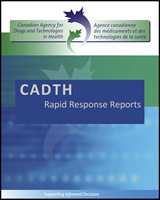Natural or synthetic opioids can be used therapeutically, recreationally, and children may be unintentionally exposed to them.1 Opioid addiction and abuse is a major medical and social problem all around the world.1,2 The opioids exert their biologic effects through interactions with multiple opioid receptors (μ, δ and κ). The μ-opioid receptor is attributed to respiratory depression - a main hazard of severe opioid overdose which is potentially fatal.1,3–5
Opioid antagonists are commonly used as rescue medications to reverse severe opioid-induced respiratory depression.4,6 Naloxone is a non-selective, short-acting opioid receptor antagonist which acts on the μ-, δ- and κ-opioid receptors.2 It has been approved by Health Canada as an opioid antagonist since 1994.7 The most common use of naloxone is for the treatment of opioid overdose in both hospital and out-patient settings, and in rapid detoxification (being given intravenously [i.v.] when combined with other medications).2 Other routes of administration include intramuscular, subcutaneous, intranasal and through an endotracheal tube.1,8
The administration of naloxone in a home or community setting for overdose prevention may be an attractive option to reduce over-dose related deaths as it appears to be feasible and safe.9 In Canada, there are at least four cities with local overdose prevention and response programs involving naloxone dispensing, while British Columbia has recently launched a provincial program.10 Currently in Ontario, naloxone is not listed on the formulary or available through the province’s Exceptional Access Program.11
The purpose of this review is to assess the evidence of the clinical effectiveness and cost-effectiveness of the administration of naloxone in a community or home setting versus naloxone administered by a health professional. Evidence-based guidelines and recommendations for the dosing of naloxone in this setting will also be discussed.

